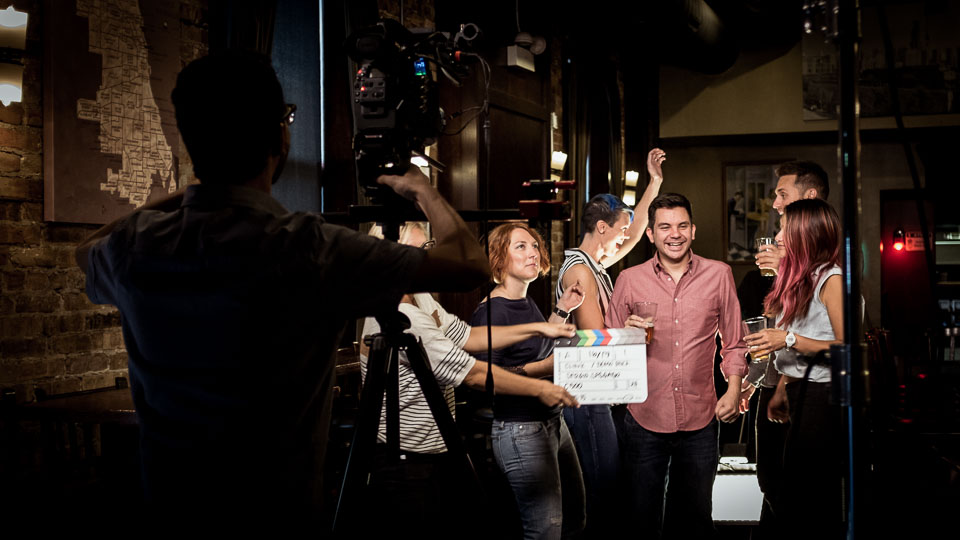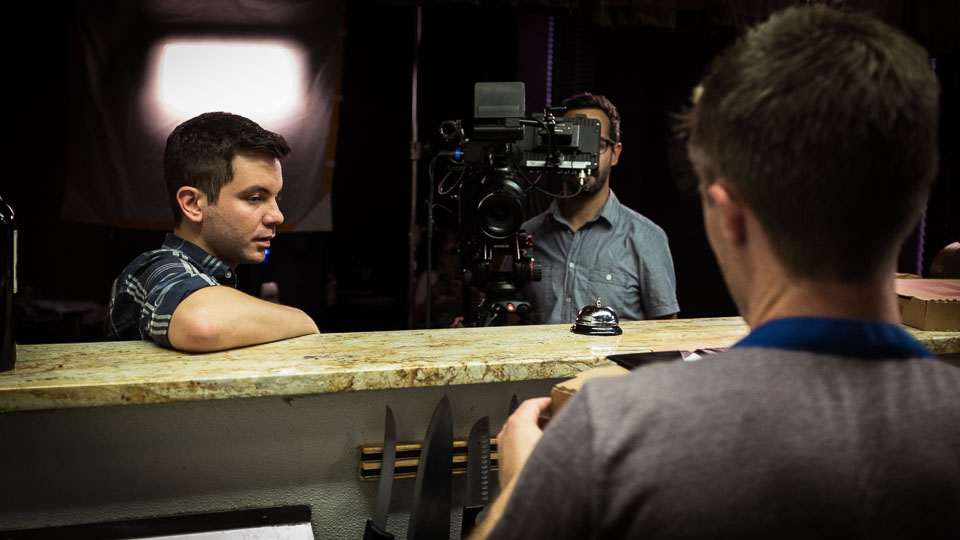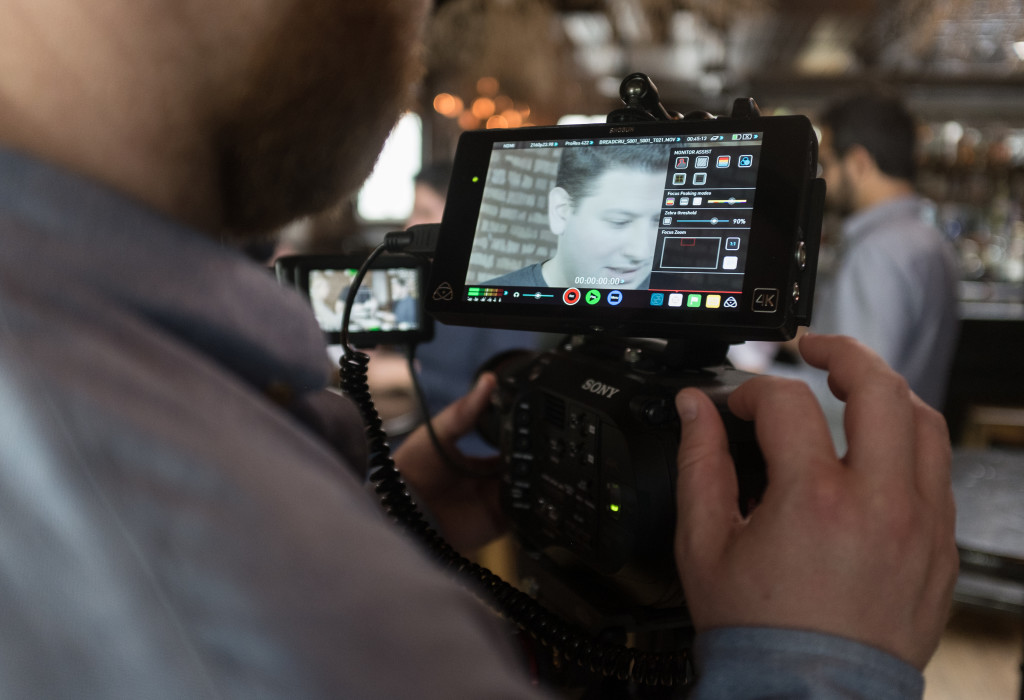Variety is the spice of life…and, as it turns out, video. Demo Duck relishes the opportunity to create videos in a plethora of styles (live action, stop motion, 2D animation, line art, etc.) and it’s part of the reason clients find us to be a good shop to partner up with.
However, not many people understand that there are significant differences in the project budget when you change the style of your video. There’s always some sticker shock involved in working with a top notch production house but when a client hears how much more it costs to make a live action video compared to animation, they’re often dumbfounded about the origins of that price gap.
We figured a post dedicated to the topic would better serve the corporate video community at large and help marketers calculate a more accurate budget before asking for funds from their boss or contacting prospective video partners.

Everyone’s process is different, but here are some common steps that overlap in a live action and animation production. Meaning these costs are incurred no matter the style of your business video.
Live Action & Animation Shared Costs
Concept $500 – $2000: Whether you’re filming or animating your corporate video, you still need to set up a framework or story that’s going to keep viewers engaged and creatively convey your content. Not the most expensive part of the process, but often one of the most important.
Script $1000 – $2000: The script for a live action shoot will often look much different than one written for animation because it includes stage directions, shot transitions, and, potentially, multiple characters speaking to each other. So, a live action video script may be a tad more expensive but generally runs the same as an animated video script.
Storyboards $1000 – $1500: Storyboards are an essential part of the process in making sure the animator or director’s vision is inline with that of the end client. These are often sketched, but occasionally we produce photo boards, which means sending a director and producer to the location to get rough set ups of each shot. Either way it’s going to cost you around a grand.
Sound Design (Music, VO, SFX, etc.) $1500 – $3000: Sound design has a huge impact on the emotional tone of each video, and it’s part of our process no matter the style. This includes a professional voiceover recording, selection of music tracks, and any necessary sound effects and sound mixing.
Outside of those four components, the process for a live action video is much different than animation. So, here’s hoping the below breakout helps you wrap (pun intended) your head around the price of shooting a live action business video.
Pre-Production
Location $500 – $5000: Location. Location. Location. If you have to say it thrice, it probably doesn’t come cheap. This line item includes everything from location scouts, rental prices, and transportation to and from the site. On the low end, you are typically looking at locations owned by friends and family, or permits needed to shoot outside. The price goes up when we’re looking for an office, retail site, or any specialty location (like a doctor’s office, school, or college campus). Keep in mind, these are typically places of business, so they’ll demand a pretty penny if you’ll be disrupting their day to day.
Talent $500 – $3500: They may be some of the more emotionally unstable people in the world (sorry it’s true!), but good talent is expensive. Sure you could get your cousin’s friend to star as an extra for pocket change, but if you’re looking for someone to nail the delivery of some crucial lines about your product or service, it’s better to pony up for an experienced thespian. That means calculating in some additional time and cost for auditions, callbacks, and screen tests.
Insurance $500 – $1000: Didn’t even think about this one did ya? Most places will require a specific type of insurance in order to shoot there, which comes with a hefty price tag even if you use one policy across multiple shoots in a year. Obviously this is a live action specific cost since animation production takes place entirely within the confines of a creative’s computer.
Props $0 – $2000: These inanimate stars of the screen are an often forgotten expense that can quickly put a dent in your wallet. Monitors, vases, and coat racks aren’t terribly expensive on their own but they add up. Often we can pull simple props from our office (laptops, cell phones, etc), but many productions need specific props to fit with the story line.
Wardrobe $0 – $750: Our actors need to look the part and wardrobe plays a big factor in achieving that perfect aesthetic. Depending on the concept and characters you can often get away with them wearing some of their own (sans logo) garb, but not everyone has that spare pair of suspenders laying around.
Set Construction $500 – $3000: Sometimes that ideal location doesn’t exist and it needs to be made from near scratch. We do our best to find the right location but if we’ve exhausted all of our options, sometimes we pull a Tim Gunn and literally make it work. This means sewing curtains, building fake walls, or constructing a specialty Vegas-inspired light up sign… which means not only the cost of materials, but potentially the cost of labor.
Production
Director $3000 – $6000: These visionaries are a key ingredient in bringing the story to life and they’re usually a meaty part of the overall budget. We feel that this is one of the worse places to cut budget because if you don’t find the perfect director you could end up with a visual disaster on your hands.
Director of Photography/Cinematographer $1500 – $2000: The DP is in charge of executing the vision of said director. While the director has the reigns on the overall tone, vibe, and shot progression, the DP has the technical know how to make it all possible. Sometimes you can find a director who can work double duty as the DP, but with more responsibility comes a greater chance of mistakes…so tread carefully with dual roles.

Sound Engineer $500 – $1000/day: Only a necessity when there is live dialogue that needs to be captured, these audiophiles ensure that everything sounds right when it hits your ear. They monitor booms, apply lavs, and capture room tone to get everything they need.
Gaffer $500 – $1000/day: This is the resident lighting expert who will be adjusting “scrims”, “screens”, and “bounces” to make sure the viewer’s attention is drawn to the right place on screen and those pesky shadows don’t ruin the shots.
Production Assistant $250 – $500/day: Everyone can’t just focus the big picture, someone (or usually a few people) need to move furniture, place sandbags, tape over logos, and about a million other things that often go way too unappreciated.
Craft Services & Lunch $100 – $300/day: Craft services and meals for the cast and crew ain’t free…
Post Production
Editing $500 – $2000: Depending on the length of the video, complexity of the shot list, and amount of footage to sort through getting the perfect picture in Premiere Pro can be very taxing. There are some crazy editing timelines out there of people stacking literally hundreds of shots on top of one another. It’s a learned skill and one that you’ll have to pay for.
Coloring $500 – $1000: Lighting and mood is often impossible to get exactly right during the shoot. The sun sets, clouds roll in, and actors faces can even change color (i.e. get flushed) under the hot lights. Finding a good colorist can help you make the video feel cohesive and achieve that perfect look once picture is locked.

Graphics $1500 – $4000: Graphics can be as simple as animating the logo during the CTA but often times there is a lot more involved. Compositing app screens on phones, popping out illustrated UI over a monitor, or adding colorful accents to movement can set your video apart but those graphics end up being a substantial part of your budget too.
Recap
Ok, so first off…breathe. We know you busted out your iPhone calculator to add those figures together and got between $30 – 35K, which is a lot of money no doubt. But that doesn’t mean you should default back to animation since it’s cheaper. The truth is there is no perfect answer when it comes to corporate video styles and we’ve debated animation and live action before (and will probably continue to do so).
It’s all about working within your budget, creating a video that fits your brand, and crafting the message that will best resonate with your audience. If you’ve got any additional questions or tips on which parts of the process are more “worth it” than others, feel free to let us know in the comments below.